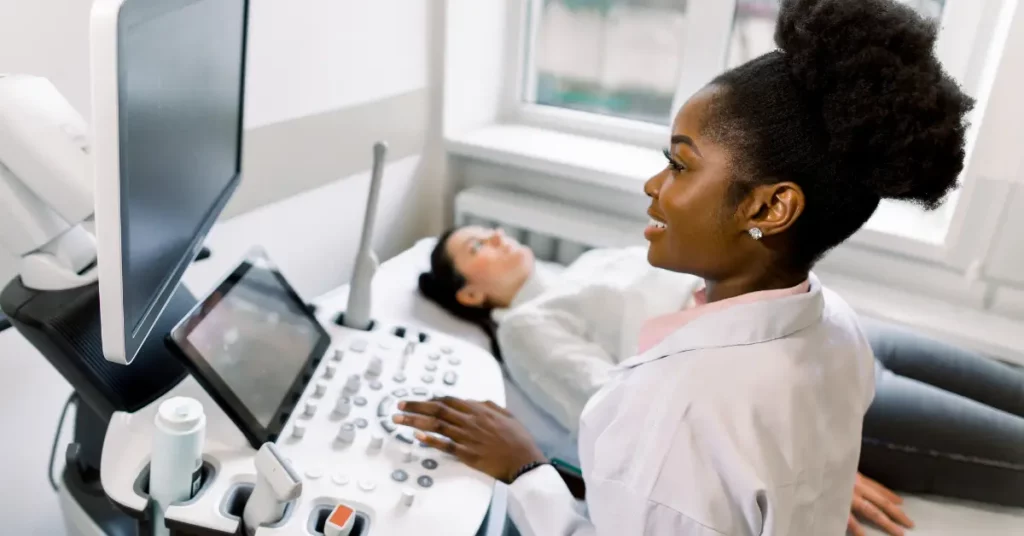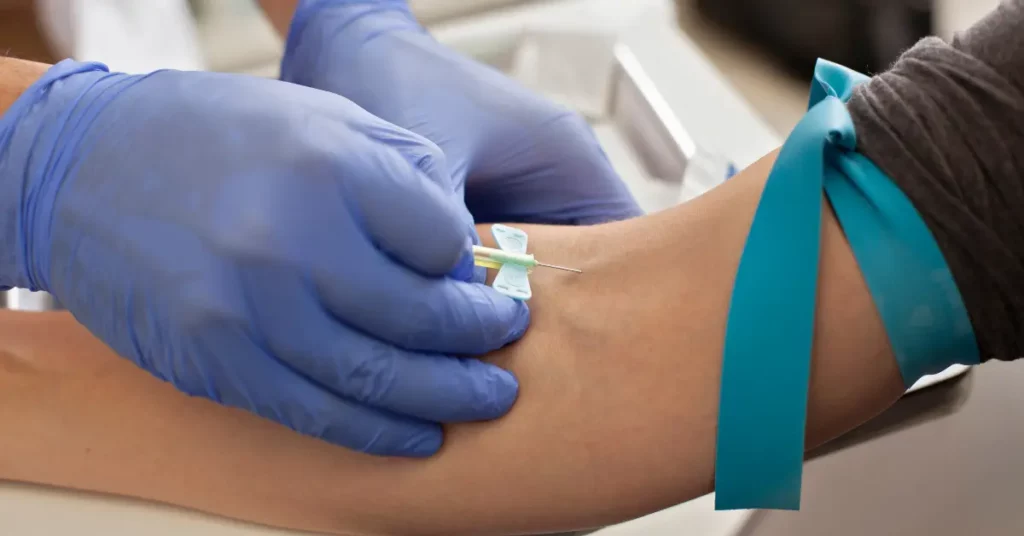How to Diagnose Fibroids? Essential Tests to Identify Uterine Fibroids
Fibroids are prevalent in women, with approximately 70% developing them by the age of 50.
This condition can present with various symptoms such as heavy menstrual bleeding, pelvic pain, and urinary frequency, making accurate diagnosis essential.
Through methods like ultrasound and MRI, healthcare providers can assess fibroid size, number, and location, guiding treatment decisions.
Regular monitoring enables timely intervention to prevent complications and enhance patient well-being.
In this article, we will learn how to diagnose fibroids in detail to manage this condition effectively.
How to diagnose uterine fibroids
Your doctor can check if you have fibroids by using a combination of medical history review, physical examination, and imaging tests.
Here are the steps involved in diagnosing fibroids:
Medical history and physical tests
The diagnostic process often begins with a complete medical history evaluation.
Your healthcare professional will ask some questions about your signs, menstrual cycle, and any other relevant medical history.
This helps in understanding if you have symptoms of fibroids and ruling out other possible conditions.
During a pelvic examination, your doctor will assess your uterus for any abnormalities in size, shape, or texture.
Fibroids can sometimes be felt as firm lumps during this examination.
Imaging studies
Imaging studies have a vital role in diagnosing fibroids and assessing their size, number, and location.
Ultrasound

Transabdominal or transvaginal ultrasound is often the initial imaging test used to detect fibroids.
It uses sound waves to create visuals of the uterus and can help know the size, number, and location of fibroids.
A study published by the National Library of Medicine highlights the accuracy of Transvaginal Ultrasound (TVS) in detecting endometrial fibroids.
The study found that TVS had a sensitivity of 89.2% and a specificity of 99.6%.
Here, the sensitivity means TVS correctly identifies 89.2% of people with fibroids. While specificity means it accurately rules out 99.6% of people without fibroids.
These results are consistent with another study, which reported a sensitivity of 90.9% and a specificity of 100% for TVS in detecting endometrial fibroids.
Magnetic Resonance Imaging (MRI)
MRI can help confirm the diagnosis of fibroids, especially when ultrasound results are inconclusive.
It provides detailed images of the uterus and surrounding structures.
Hysterosonography
The Hysterosonography test is used to evaluate the endometrium for abnormalities like fibroids and polyps.
Hysterosonography involves injecting saline into the uterus to enhance the ultrasound images.
Other tests
There are some other tests that can also be used to diagnose fibroids.
It includes the following:
Hysteroscopy
In the Hysteroscopy procedure, a flexible or rigid hysteroscope (like a telescope) is inserted through the cervix into the uterus.
It allows the doctor to directly visualize the uterine cavity and detect any abnormalities, including fibroids.
Biopsy
In some cases, a biopsy or tissue sampling may be recommended to rule out other conditions or confirm the presence of fibroids.
Endometrial biopsy may be performed to evaluate abnormal uterine bleeding or assess the endometrial lining for abnormalities.
Blood tests

Blood tests are not primarily used to diagnose fibroids.
However, a Complete Blood Count (CBC) might be done by doctors to check for Anemia if heavy bleeding is a symptom.
Hysterosalpingography
A Hysterosalpingogram is often used to evaluate the uterus and fallopian tubes.
Your doctor may use this test to detect the presence of uterine fibroids.
This X-ray dye test provides imaging of the pelvic area, offering insights into the structure and potential abnormalities of the reproductive organs.
Conclusion
Diagnosing uterine fibroids involves a comprehensive approach.
Healthcare providers begin with a thorough medical history review and pelvic examination to assess symptoms and identify any abnormalities in the uterus.
Following this, imaging tests such as ultrasound and MRI are utilized to visualize fibroids and evaluate their size, number, and location accurately.
Additionally, other tests like Hysteroscopy and occasionally biopsy may be recommended to assess further and confirm the diagnosis.
Collectively, these diagnostic tools enable doctors to develop personalized treatment plans and enhance patient well-being.
If you suspect you have uterine fibroids, it is vital to consult with healthcare providers for proper evaluation and management.
Frequently Asked Questions
How are uterine fibroids diagnosed?
Uterine fibroid diagnosis starts with a medical history review to understand symptoms. A pelvic examination assesses the uterus. Imaging tests like ultrasound and MRI visualize fibroids. Additional tests, like hysteroscopy or biopsy, may be recommended. These methods ensure accurate diagnosis and tailored treatment plans.
How accurate is an ultrasound in diagnosing fibroids?
Ultrasound is highly accurate in diagnosing fibroids. Transvaginal ultrasound has been found to have a sensitivity of 89.2% and a specificity of 99.6% for detecting endometrial fibroids. This means that TVS correctly identifies 89.2% of people with fibroids and accurately rules out 99.6% of people without fibroids.
What role do imaging studies play in diagnosing fibroids?
Imaging studies like ultrasound and MRI are crucial in diagnosing fibroids. They provide detailed images of the uterus and fibroids, allowing healthcare providers to assess their size, number, and location accurately.
Can blood tests diagnose fibroids?
Blood tests are not primarily used to diagnose fibroids. However, a complete blood count (CBC) may be performed to check for Anemia if heavy bleeding is a symptom associated with fibroids. Imaging tests such as ultrasound and MRI are primary diagnostic tools for identifying fibroids accurately.
WowRx uses only high-quality sources while writing our articles. Please read our content information policy to know more about how we keep our content reliable and trustworthy.






